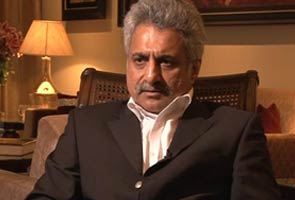Though I came to know late, if some of you have time please read the article published in Odisha Review titled as "The Marketing Strategy of Economic Development in Kalahandi". You may also give your comment. Thank you.
http://orissa.gov.in/e-magazine/Orissareview/2012/sep/engpdf/september-or-%202012.pdf#page=82
Click here
New Delhi: All 12 villages in the Niyamgiri Hills of Orissa have rejected Vedanta Resources Plc.’s proposal to mine bauxite in the region after a decade-long battle between tribespeople and the London-listed mining company run by non-resident Indian tycoonAnil Agarwal.
Jarapa in Rayagada district, the last of the villages that were asked by the Supreme Court to decide whether the project should go ahead, chose on Monday to follow the example of the 11 other villages and vote against the miner’s proposal.
These 12 villages were selected by the Orissa government out of more than 100 in the Niyamgiri hills after a Supreme Court ruling on 18 April. In its order, the apex court gave village councils in the Rayagada and Kalahandi districts three months to prepare their reports on whether bauxite mining should be allowed and to what extent.
The environment ministry now needs to decide whether it would issue a permit to Vedanta to mine bauxite in the area, according to the apex court’s ruling.
The local Dongria Kondh and Kutia tribes say their deity Niyam Raja lives in the hills and the proposed mine will impinge upon their socio-cultural and religious rights.
The verdict of the gram sabhas has been overwhelmingly against mining in the region. Seven of the village councils had by 30 July rejected Vedanta’s proposal to mine bauxite it wanted to use as ore for its alumina refinery. Four more subsequently voted against the project.
Activists who have been campaigning against the Vedanta mining proposal rejoiced on social media.
“Match Over! The final score card #Niyamgiri 12 - #Vedanta 0. Jarapa says a big unanimous NO to mining,” Surya Shankar Dash, an independent documentary film maker, tweeted.
The voices of tribespeople should be heard in a democratic country, according to Sidharth Nayak of Green Kalahandi, an Orissa-based not-for-profit body. “The livelihood of a lot of the tribals is dependent completely on the Niyanmgiri hills and their votes should be respected,” Nayak said. “If so many people have rejected (the mining proposal) and it is a matter of their lives, then the decision should be respected.”
The Naveen Patnaik-government of Orissa and Vedanta should close the Niyamgiri chapter in a dignified manner, rural development minister Jairam Ramesh was quoted as saying by The Hindu newspaper on 17 August.
“At this moment, I won’t be able to comment on anything,” a manager at Vedanta Aluminium Ltd said, requesting anonymity. “But our memorandum of understanding with Orissa Mining Corp. is still intact.”
He cited Pinaki Misra, a member of Parliament from Orissa’s ruling Biju Janata Dal, as saying that the state administration remained committed to providing 150 million tonnes of bauxite as per the agreement.
Vedanta’s one million tonne per annum alumina refinery at Lanjigarh in Kalahandi district, about 600km from Bhubaneswar, could never operate at full capacity due to a shortage of bauxite, and it is now closed.
Vedanta has a joint venture with state-owned Orissa Mining to develop a bauxite mine in Niyamgiri hills and supply the material to Vedanta’s alumina refinery. The apex court’s ruling in April came in a case pitting the state-run firm against the environment ministry.
Saswat Mishra, managing director of Orissa Mining, couldn’t be reached for comment over the phone despite repeated attempts. An emailed query was not answered.
This outcome was largely expected and Vedanta will face difficulties in this regard, an analyst with a Mumbai-based brokerage firm said, requesting anonymity.
“They will continue to operate their alumina refinery at reduced capacity with minimal margins on imported alumina or bauxite sourced from nearby areas or Gujarat,” the analyst said.
“But they have to apply for mines afresh, and this being an election year, it’s going to be a daunting task.”






